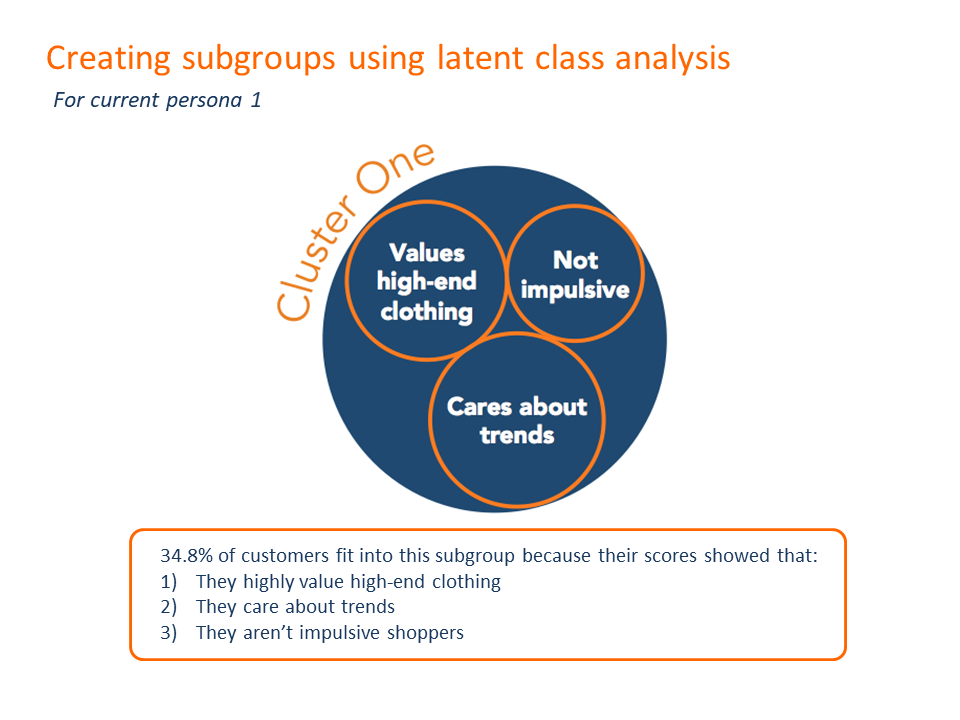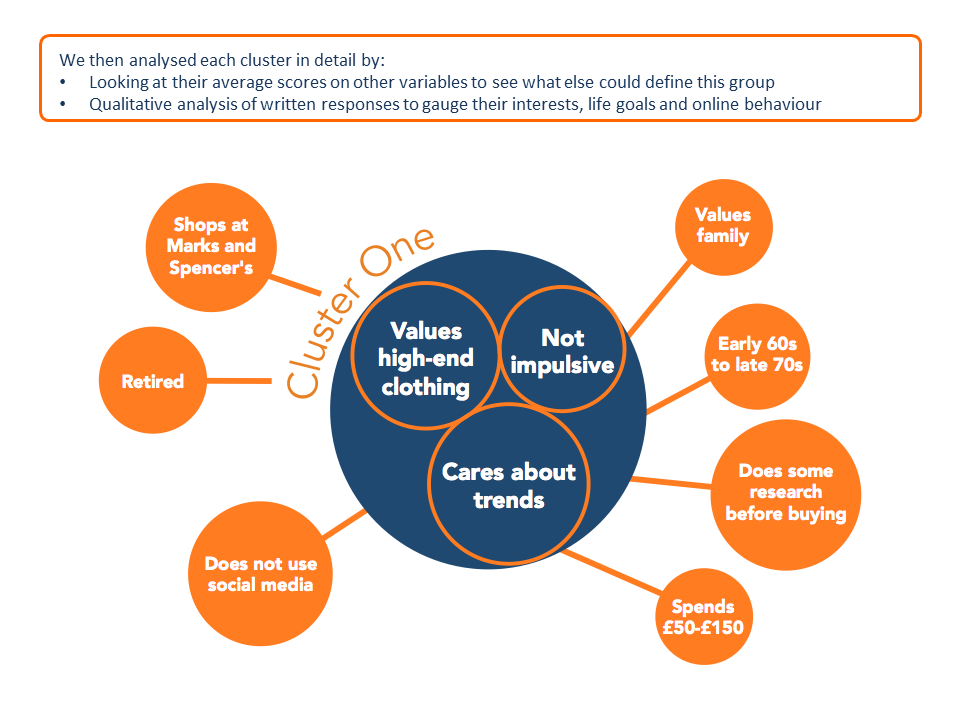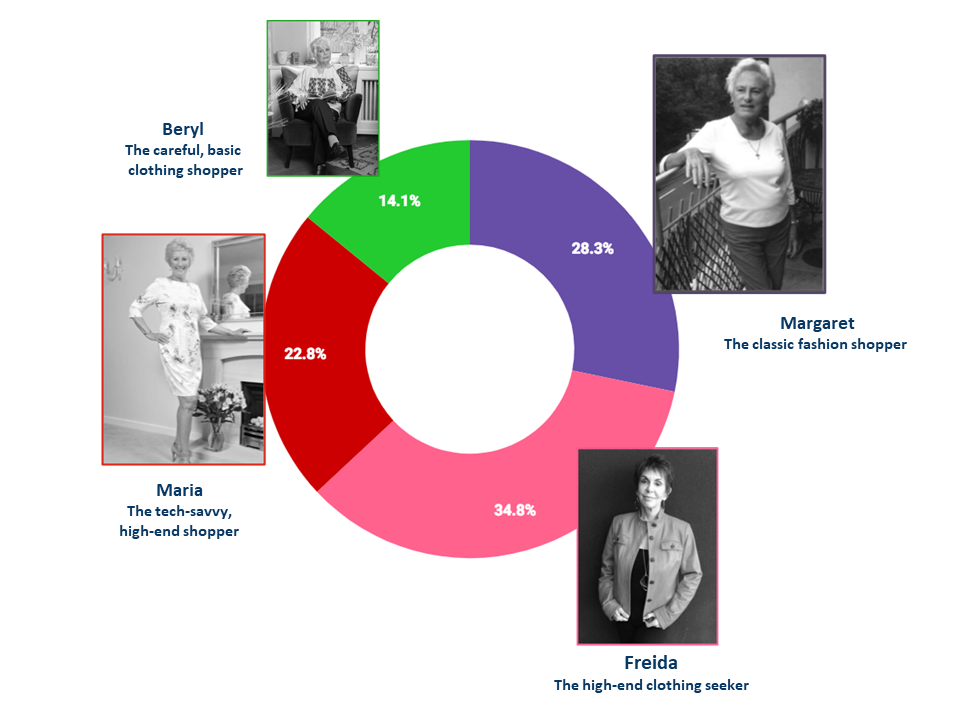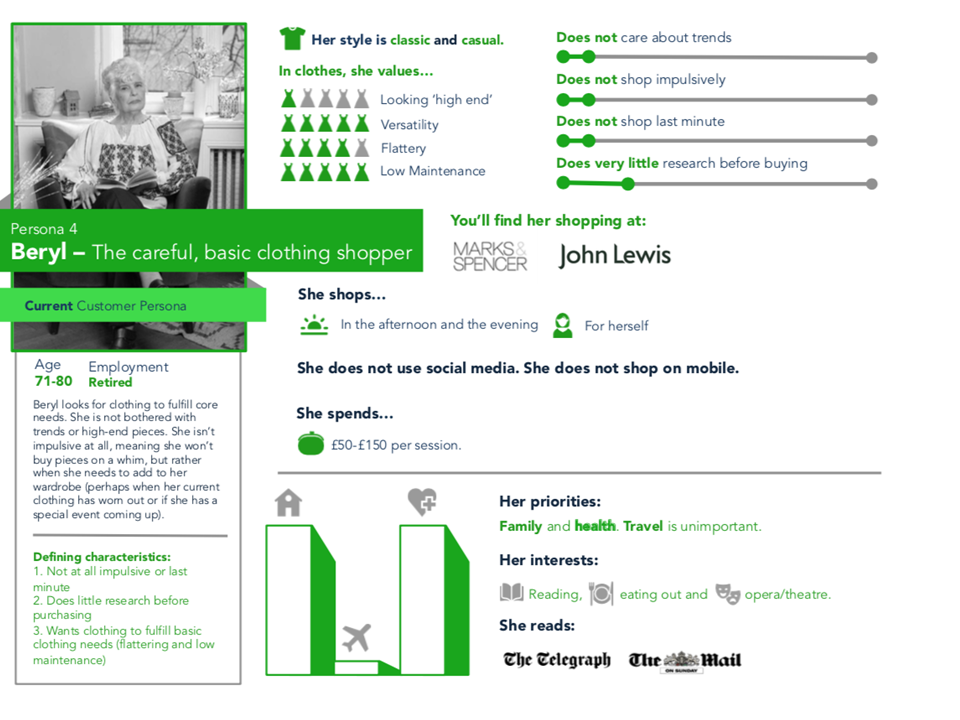Ecommerce personas creation
A European, over-50s fashion brand wanted to better understand how to meet the needs of their audience. We formulated 7 personas for the brand, split into two groups: existing and potential customers. To craft the personas, we used a mixed-methods survey and undertook latent class analysis to cluster groups to form the core of these personas.
Please note details on the brand have been omitted to retain privacy.
Persona creation | surveys | mixed methods
1. Problem
This over 50’s fashion brand came to us with the following problem: how to make existing and new customers, who are technologically empowered, buy from them online and see their brand as relevant and fresh. At the time, this multi-million European brand made most of their money through catalogue and over-the-phone sales. They wanted to optimise to increase the conversion rate for their online shoppers.
2. Process
Before diving into digital marketing to increase sales, we reviewed the brand’s existing personas to check we had a strong understanding of their customers first. These personas were broad and didn’t factor sub-groups of their customer base, didn’t include psychographic or behavioural insight and only concerned existing customers. We decided the best starting point for this brand was to create new, data-rich customer personas which would include the following:
One set of personas created for their existing audience, to nurture current clients and build brand advocacy.
One set of personas created for potential customers, so the brand would better understand how to break into and meet the needs of new markets.
Both demographic, psychographic and behavioural data would be collected to create personas so these were as rich and informative as possible.
We would use both quantitative and qualitative methods to collect persona data so we could a) create personas based on a representative sample and b) supplement this with detailed qualitative insight to understand motivations and attitudes.
2.1. Research methods
We employed the following research methods for creating personas for the brand:
Website Google Analytics analysis to get a feel for the brand audiences user journeys and demographics data.
Survey for existing customers with both qualitative and quantitative questions covering psychographic, behavioural and demographic data which would form the core data for persona creation.
Competitor persona analysis using Google Surveys so we could understand the needs and motivations of the brand’s competitor’s audience.
Guerilla survey taken outside high street stores which were simillar to the brand’s which mirrored the survey we gave existing customers. This allowed us to create the potential personas.
The customer survey, which formed the core of our persona creation, included 27 questions in total split into 5 sections: 1 - demographics part 1, 2 - online shopping behaviour, 3- shopping style, 4- social media, activities, interests and mobile use, 5 - demographics part 2. We split demographics out to try and keep survey engagement. We also incentivised the survey with a shopping discount to increase completion rate. Providing this discount code resulted in an additional £17,000 in sales for the company.
We created our own measures for online shopping behaviour and shopping style. For example, for online shopping behaviour, we formulated survey questions to identify whether someone shopped impulsively, at the last-minute, undertook research before purchasing, or cared about trends.
2.2. Analysis
We used R to run all statistical analyses on the survey data.
After cleaning the data set, we first ran a factor analysis on variables to establish construct validity to ensure the questions we’d created for the survey measured the different constructs they were intended to.
We then ran statistical analysis to identify personas. As we had a large sample size for our current customer data, it would have been very difficult to see how people cluster if using a traditional cluster analysis, so we instead ran a latent class analysis. We used a cluster analysis to identify subgroups for the potential customer personas, choosing a different statistical analysis method because of smaller sample size.
After running cluster analyses, we looked at qualitative survey responses for customers in each cluster to supplement the personas we had identified using statistical methods. Below is an example of some of the clusters/classes we identified using statistical analysis:


2.3. Results
Combing the data we gathered as part of the process, we created personas for both existing and potential customers for the brand. By using statistical analyses, we were able to tell the brand what percentage of the sample audience each persona made up, which could help them prioritise audiences.
We created persona cards using InDesign to display personas in a way which was engaging and easy to interpret for all of the brand’s staff. Some examples of these personas are included below.



4. Learnings
I really enjoyed creating customer personas for this brand using a mix of qualitative and quantitative methods. It allowed us to produce personas which were more representative of the brand’s audience, having a large sample of data, while still being rich with qualitative insight. This was my first time using R and running latent class and cluster analyses, which really stretched me in terms of my statistical skills, being a primarily qualitative researcher. I learnt so much working directly with the statistician who taught me how to use these statistical methods and greatly increased my confidenced in quantitative research methods.
I also learnt the importance of explaining complex analysis methodology to a client in clear terms. This is tricky to do but crucial for not overwhelming them with data and giving them the insight they really need and value, which for the brand we worked with, was the findings rather than the analysis.

